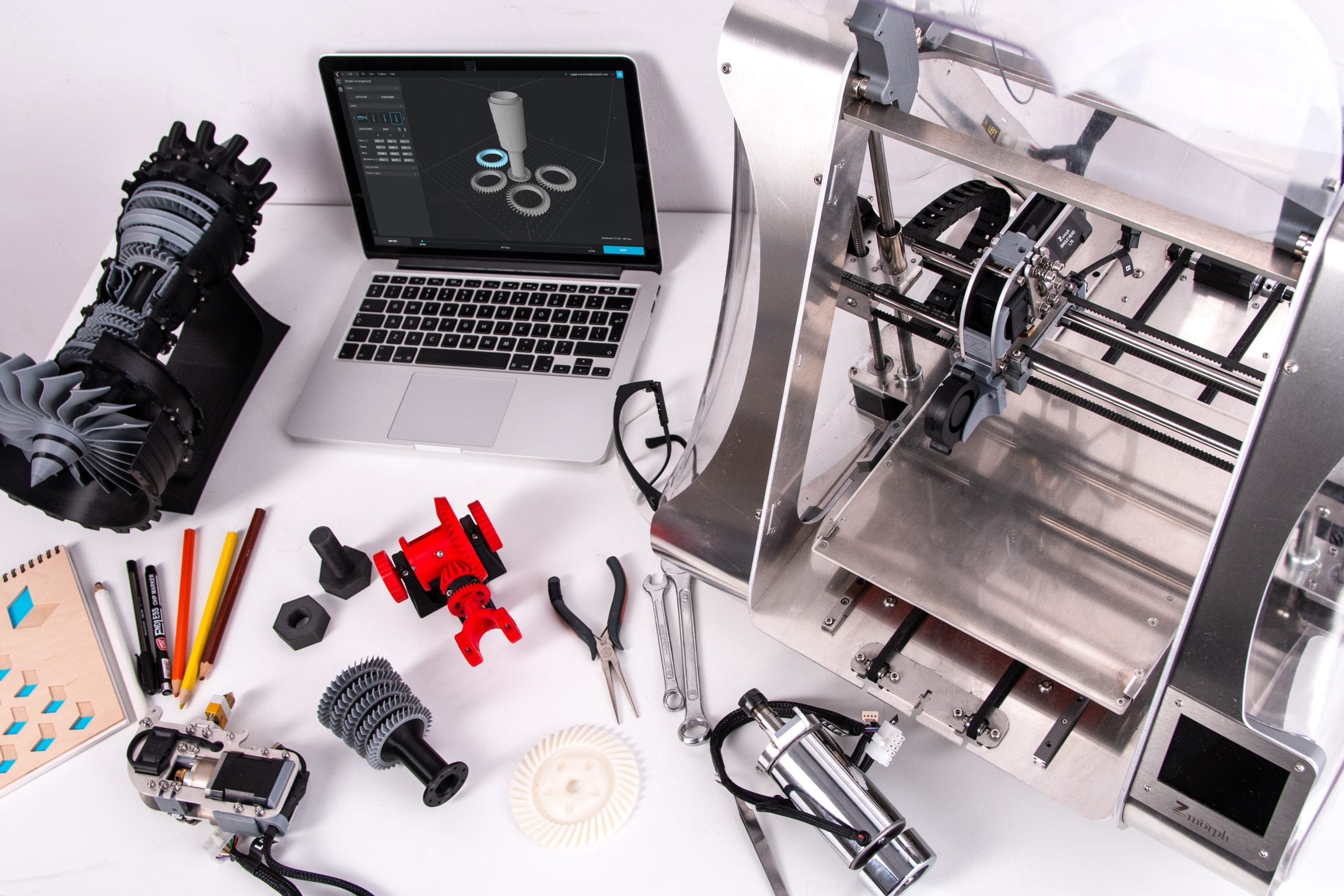Three-dimensional printing, also called additive manufacturing, is growing in adoption as companies look for ways to produce devices and parts faster and at a lower cost than they have been able to through traditional manufacturing methods. By 2020, the additive manufacturing market is forecasted to reach $15.8 billion worldwide, according to the Wohlers Report. So for 3D Systems, an innovator in the market for more than 30 years, the opportunity to surpass its customers’ expectations is as ripe as ever.
For decades now, 3D Systems has been providing advanced applications for prototyping and manufacturing in markets such as aerospace, automotive, medical, dental, and consumer goods. The company offers a wide variety of printers to empower manufacturers to create their products and business models through transformed workflows—no longer does a manufacturer need to wait for a part or product to be machined. Instead, it can be 3D-printed quickly at 3D Systems’ plant.
It’s an example of manufacturing’s servitization trend at its finest because, in addition to the printers themselves, 3D Systems also offers print materials, on-demand manufacturing services, and a portfolio of end-to-end manufacturing software. Plus, each solution is powered by the expertise of the company’s application engineers who collaborate with customers to ensure they’re getting the most out of every tool.
But with such a fast-paced, elaborate manufacturing operation comes the responsibility to provide equally fast-paced and thorough service and support. 3D Systems’ customers expect consistent uptime and reliable technology—regardless of the industry they’re in, they don’t have time to lose on broken equipment and production bottlenecks. To ensure that customer service matches the quality and speed of their printing capabilities, 3D Systems turned to ServiceMax and its partner Aquant.io.
Artificial Intelligence Powers Fast—and Predictive—Customer Service
Though 3D Systems didn’t necessarily set out to find an artificial intelligence-powered customer service solution, it quickly became apparent that AI’s diagnostic and predictive capabilities would provide the best option for the company’s speed and reliability of service needs, Mark Hessinger, 3D Systems vice president of global customer service, explained at ServiceMax’s annual Maximize conference. And that’s how 3D Systems came across Aquant.io. “We were just looking for a way to provide better service. With Aquant.io and with ServiceMax, we were able to do that,” he said.
Aquant.io’s platform works by mining and analyzing companies’ data to learn their service language and build an AI-driven decision framework around it that service technicians can rely on with confidence. The platform can easily be accessed via ServiceMax’s Remote Triage tool and can equip even newbie service agents in the field with 20 years worth of knowledge in just a few seconds, arming them with powerful diagnostic capabilities. That means any issues that 3D Systems’ customers face can be pinpointed and resolved quickly, regardless of how much experience a technician has.
Beyond just diagnosing problems, Aquant.io’s platform enables companies to be proactive about predicting service needs—something that would be virtually impossible to do without artificial intelligence collecting data, noticing patterns, and anticipating needs. “Everything in manufacturing now depends on service,” Hessinger said. “Customers want guaranteed uptime.”
Because most of the printers that 3D Systems operates are Internet-enabled, the company can continuously collect data on how they’re performing and will find out immediately when a customer is running out of certain printing materials or the printer isn’t working properly. That way, issues can be mitigated before the customer becomes aware of them.
“All our new products are connected. We are using that data to proactively know what is going on. The better the data is, the better the printing system is,” Hessinger said. “Now we can maintain uptime and resolve customer issues much more quickly.”
Hessinger added that while the company primarily uses this data internally to diagnose and resolve problems, it has also made it available to customers for their own use and internal monitoring.
New Developments on the Horizon
As 3D printing gains traction, 3D Systems continues to expand its offerings on the hardware and software side both internally and through its partner network.
For example, in late October, 3D Systems and Antleron announced a collaboration to help accelerate breakthroughs in the biomedical industry. Antleron currently develops regenerative products and personalized patient care products. Together, the two companies will create bioprinting solutions, even experimenting with working human body parts—not just components for artificial joints or limbs, but actual working organs.
“We keep developing new things with the technology, with new materials, and helping companies solve new challenges,” Hessinger said. “The market is continuing to grow.”
——————————————————————————————————————————————————————————————————–
This topic was presented as a part of ServiceMax’s Maximize Chicago conference in October 2019. The session titled “Harness Your Service Data with AI” was co-presented with Katharina Streater and Sam Neva from ServiceMax and Shahar Chen from Aquant.


Share this: